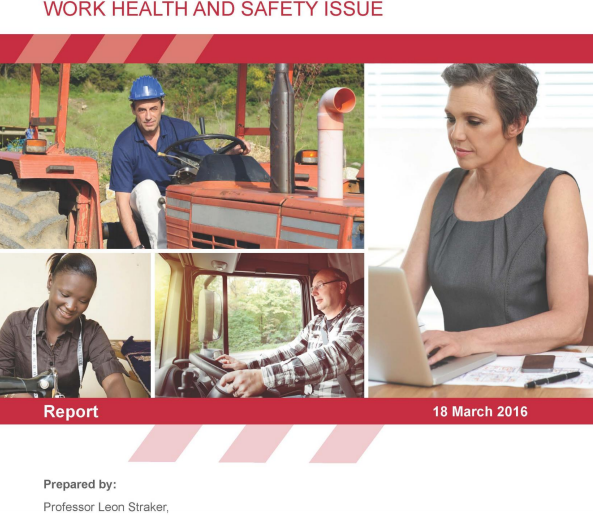As you should hopefully know now if you have been following this blog, too much sitting, and in particular prolonged periods of sitting, can increase the risk of an early death. Replacing long periods of sitting with either standing or other physical activity has been shown to produce beneficial effects on a person’s glucose, insulin and lipid (or fat) metabolism in short term laboratory studies. But are there any additional health benefits that can be achieved when people manage to replace their prolonged periods of sitting long-term, and if so what are they? And are greater benefits seen for a person’s health when they replace sitting with stepping, not just standing? The Stand Up Australia research team set out to try and answer these questions by using a method known as compositional data analysis (CoDA). CoDA enables the researchers to simultaneously look at all activities a person does in a 24-hr period, and how this activity distribution is related to the person’s cardio-metabolic biomarkers, such as body weight and cholesterol to name a few. This is the first study to use the CoDA method within the context of a sitting-reduction intervention, and it was published in the March issue of…
Healthier Workplaces WA BeUpstanding Lunch ‘N’ Learn
Check out this amazing Lunch ‘N’ Learn seminar that Healthier Workplace WA held in November. It was led by Leon Straker who is a professor of Physiotherapy at the School of Physiotherapy and Exercise Science at Curtin University. As an expert in the field, Leon provides a thorough review of the benefits of moving more and sitting less, and the dangers of too much sitting. He also gives a great overview of the BeUpstanding™ Champion Toolkit, what it means to take part in BeUpstanding™, and how you can start your BeUpstanding™ journey today. Lunch ‘N’ Learn seminars are a fun and engaging way to educate the workforce about the benefits of taking part in BeUpstanding™. They can also help people understand how the initiative can fit into their workplace. If you hold a session like this please share it with us! We love to hear your experiences and feedback so we can learn from you!
Benefits to heart health of reducing workplace sitting
We know that significant reductions in workplace sitting are achievable. But how does reducing sitting impact on workers’ health? We examined this using data from our Stand Up Victoria intervention – a 12 month intervention in office workers that used organizational-, environmental- (including sit-stand workstations) and individual-level approaches to reduce prolonged workplace sitting time in desk-based workers. What did we do? We recruited 14 work teams and over 200 workers (136 intervention; 95 control) from the one organisation to take part in this cluster randomised controlled trial. We measured 14 biomarkers of body composition, blood pressure, glucose metabolism, lipid metabolism and a composite overall cardio-metabolic risk score in both the intervention and control participants at three time points: before the intervention, after three months of the intervention (end of the intensive intervention phase), and after 12 months. What did we find? We found a significant, beneficial intervention effect for fasting glucose and the clustered metabolic risk score at the 12 month assessment. This beneficial effect for fasting glucose was mainly due to the control group getting worse over the 12 months. There were no significant intervention effects observed at 3 months. Notably, sitting was primarily replaced with standing. What does this…
Moving every half hour could help limit effects of sedentary lifestyle, says study
Exercise is not enough to ward off the risks of sitting still for long periods of time, regular movement is key! This recent article in the Guardian highlights the latest evidence…
Policies relating to occupational sedentary behaviour?
Your workplace is likely to have policies regarding leave, fire safety, employment conditions, etc. etc. but what about sedentary work? Dr Pieter Coenen led a qualitative review of existing national and international occupational safety and health policies relating to occupational sedentary behaviour. He concluded that although there were no occupational authority policies that focused specifically on sedentary behaviour, there were a relevant aspects of existing policies that could be modified to address occupational sedentary behaviour. Do you have a policy addressing occupational sitting in your workplace? Please share your story with us.
Reduce the health risks of sedentary work
Sedentary work is a growing health and safety concern across the globe. This article is worth a read from the Department of Health and Human Services in the USA. Workplace Solutions From the National Institute for Occupational Health and Safety
Sit, Stand, Move, Repeat!
What happens when we sit for too long?
When you sit you are spending very little energy and your large postural muscles aren’t working very hard. This means your metabolism starts to slow down which can lead to poor health outcomes in both the short and long term. Too much sitting has been linked to an increased number of musculoskeletal conditions, as well as increased risk of overweight or obesity, type 2 diabetes, cardiovascular disease, some cancers and premature death. Time to stand up?
Feeling foggy? It might be time to get up…
The following article was published in The Conversation on July 27th, 2017. Could too much sitting be bad for our brains? Sitting affects our glucose levels, which affects our brain. Unsplash/Andrew Branch, CC BY-SA Michael Wheeler, University of Western Australia; Daniel Green, University of Western Australia; David Dunstan, Baker Heart and Diabetes Institute, and Paul Gardiner, The University of Queensland In many aspects of life where we need to use our brain power, we also tend to sit down: at school, at work, sitting exams or concentrating on a crossword. In a new paper, we explore how prolonged sitting may affect the brain’s fuel supply and have a negative impact on brain health. The brain is a glucose hungry organ. It weighs about 2% of body mass but demands about 20% of our resting energy requirements, which is mostly in the form of glucose, the primary brain fuel. If this energy supply is disrupted it can impair and even damage brain cells. Therefore, the availability of glucose to brain cells may have implications for brain health. Exposure of the brain to both high glucose levels and low glucose levels can increase the risk of developing dementia. Also, switching between a…
Safe Work Australia Report – evidence on an emergent health risk
In 2016, Safe Work Australia released their sedentary work report. This comprehensive literature review, led by Professor Leon Straker, was conducted in recognition that too much sitting is a potential workplace health and safety issue. This excellent free resource is well worth the read.









